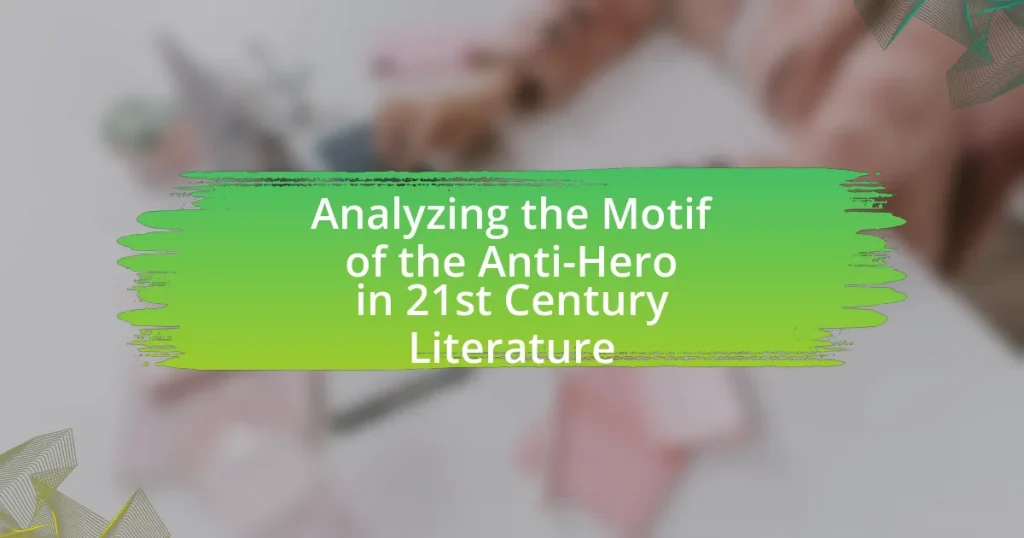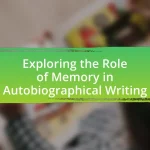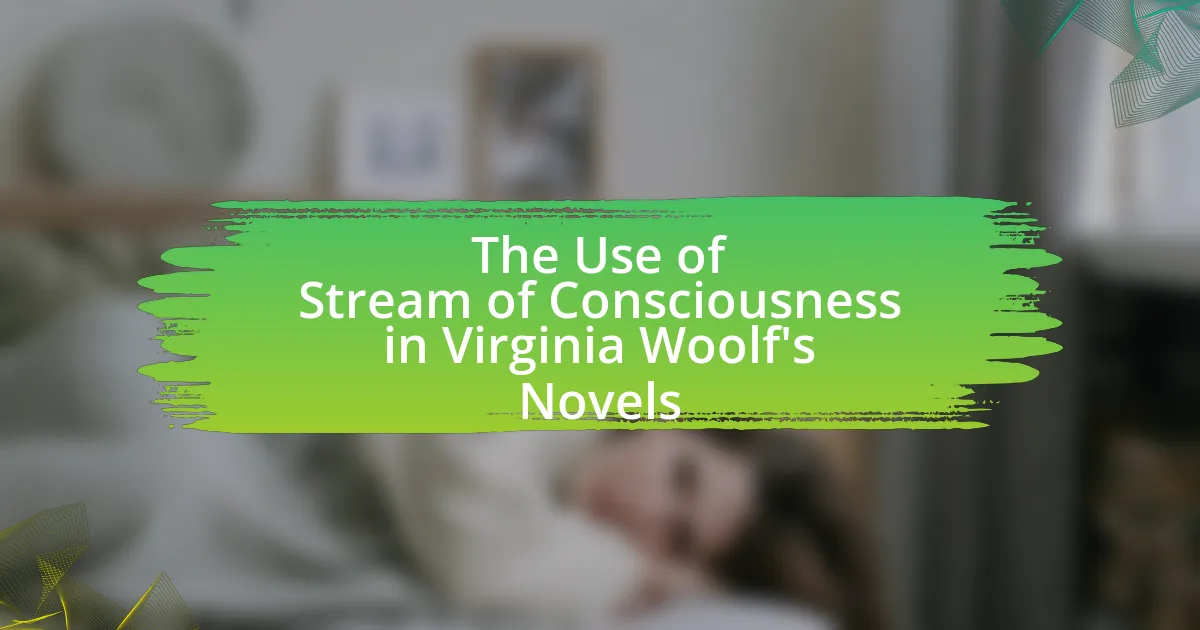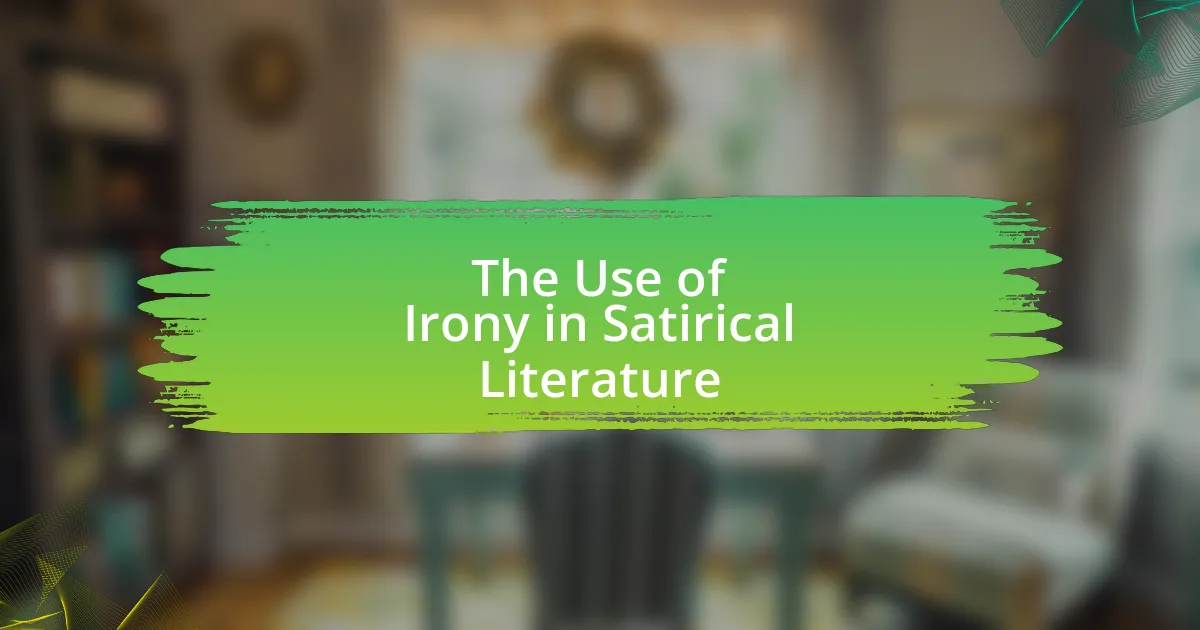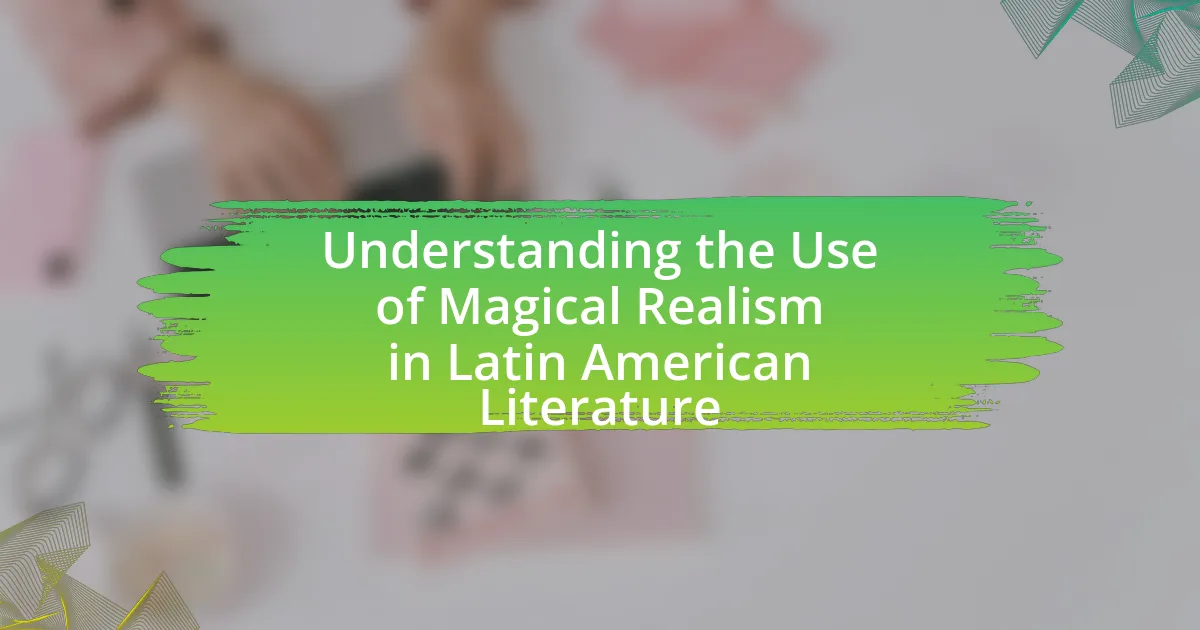The article analyzes the motif of the anti-hero in 21st-century literature, highlighting the complex moral ambiguity that defines these characters. It explores the evolution of the anti-hero from traditional villains to nuanced figures who challenge conventional heroism, as seen in works like “Breaking Bad” and “The Sopranos.” Key characteristics distinguishing anti-heroes from traditional heroes are discussed, along with the themes of societal critique, personal struggle, and the impact of these characters on plot development. The article also examines how contemporary authors utilize the anti-hero motif to reflect societal issues and engage readers in moral discussions.
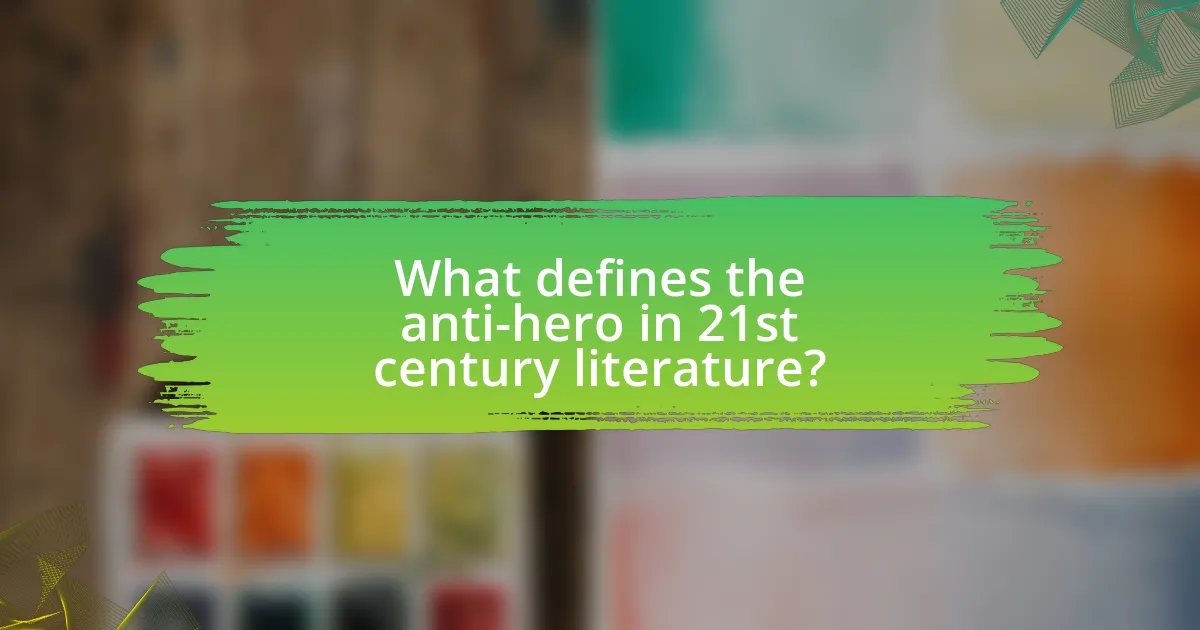
What defines the anti-hero in 21st century literature?
The anti-hero in 21st century literature is defined by complex moral ambiguity, often exhibiting traits that challenge traditional heroism. These characters typically possess flaws, engage in morally questionable actions, and display self-interest, which contrasts with conventional heroic ideals. For instance, in works like “Breaking Bad” by Vince Gilligan, the protagonist Walter White embodies this complexity as he transitions from a sympathetic character to one driven by greed and power, illustrating the blurred lines between good and evil. This trend reflects societal disillusionment with traditional values and the exploration of human nature’s darker aspects, making the anti-hero a compelling figure in contemporary narratives.
How has the concept of the anti-hero evolved over time?
The concept of the anti-hero has evolved from a traditional villain or flawed protagonist to a more complex character embodying moral ambiguity and relatable flaws. In early literature, anti-heroes were often depicted as outright villains or tragic figures, such as Shakespeare’s Iago in “Othello,” who exemplifies manipulation and deceit. However, in the 20th century, particularly with the rise of modernism, anti-heroes began to reflect societal disillusionment, as seen in characters like Holden Caulfield from J.D. Salinger’s “The Catcher in the Rye,” who grapples with identity and alienation.
In the 21st century, the portrayal of anti-heroes has further shifted to embrace a more nuanced exploration of their motivations and backgrounds, often highlighting their struggles against societal norms. Characters like Walter White from “Breaking Bad” and Tony Soprano from “The Sopranos” illustrate this trend, as they navigate complex moral landscapes while eliciting both empathy and repulsion from audiences. This evolution reflects broader cultural shifts towards understanding mental health, personal trauma, and the gray areas of morality, making anti-heroes more relatable and relevant in contemporary narratives.
What characteristics distinguish an anti-hero from a traditional hero?
An anti-hero is characterized by moral ambiguity, flawed traits, and often self-serving motivations, which distinguish them from a traditional hero who embodies clear moral values, bravery, and selflessness. Traditional heroes typically pursue noble causes and act for the greater good, while anti-heroes may engage in questionable actions, driven by personal desires or complex backgrounds. For example, characters like Walter White from “Breaking Bad” exemplify anti-heroes through their transformation from ordinary individuals to morally compromised figures, contrasting sharply with classic heroes like Superman, who consistently uphold justice and virtue.
Why do readers resonate with anti-heroes in contemporary narratives?
Readers resonate with anti-heroes in contemporary narratives because these characters embody complex moral ambiguity that reflects real-life struggles. Anti-heroes often face internal conflicts and societal pressures, making them relatable to audiences who grapple with their own imperfections and ethical dilemmas. For instance, studies show that characters like Walter White from “Breaking Bad” or Tony Soprano from “The Sopranos” illustrate the duality of human nature, allowing readers to explore themes of redemption, guilt, and the consequences of choices. This connection to flawed characters fosters empathy and encourages deeper engagement with the narrative, as readers see parts of themselves in these anti-heroes.
What are the common themes associated with anti-heroes?
Common themes associated with anti-heroes include moral ambiguity, personal struggle, and the critique of societal norms. Moral ambiguity is evident as anti-heroes often operate outside traditional ethical boundaries, showcasing complex motivations that challenge black-and-white morality. Personal struggle is a recurring theme, where these characters grapple with internal conflicts, often stemming from traumatic pasts or flawed decisions, which adds depth to their narratives. Additionally, anti-heroes frequently critique societal norms, highlighting the flaws within systems of power and authority, as seen in works like “Breaking Bad” and “The Sopranos,” where characters embody the tension between individual desires and societal expectations.
How do moral ambiguity and flawed characteristics shape anti-hero narratives?
Moral ambiguity and flawed characteristics are central to shaping anti-hero narratives by creating complex characters that challenge traditional notions of heroism. These traits allow anti-heroes to navigate morally gray situations, making decisions that often blur the lines between right and wrong. For instance, in the television series “Breaking Bad,” Walter White’s transformation from a high school chemistry teacher to a drug kingpin illustrates how his flawed characteristics, such as pride and desperation, lead him to commit increasingly immoral acts, thereby engaging the audience in a deeper exploration of morality. This complexity fosters empathy and reflection, as viewers grapple with the anti-hero’s motivations and the consequences of their actions, ultimately redefining the concept of heroism in contemporary literature.
What role does societal critique play in the portrayal of anti-heroes?
Societal critique plays a crucial role in the portrayal of anti-heroes by reflecting the moral ambiguities and complexities of contemporary society. Anti-heroes often embody traits that challenge traditional notions of heroism, highlighting societal flaws such as corruption, inequality, and disillusionment. For instance, characters like Walter White from “Breaking Bad” illustrate how personal choices are influenced by societal pressures, showcasing the impact of economic hardship and moral decay. This critique serves to engage audiences in a dialogue about ethical dilemmas and the consequences of societal structures, making the anti-hero a vehicle for exploring deeper social issues.
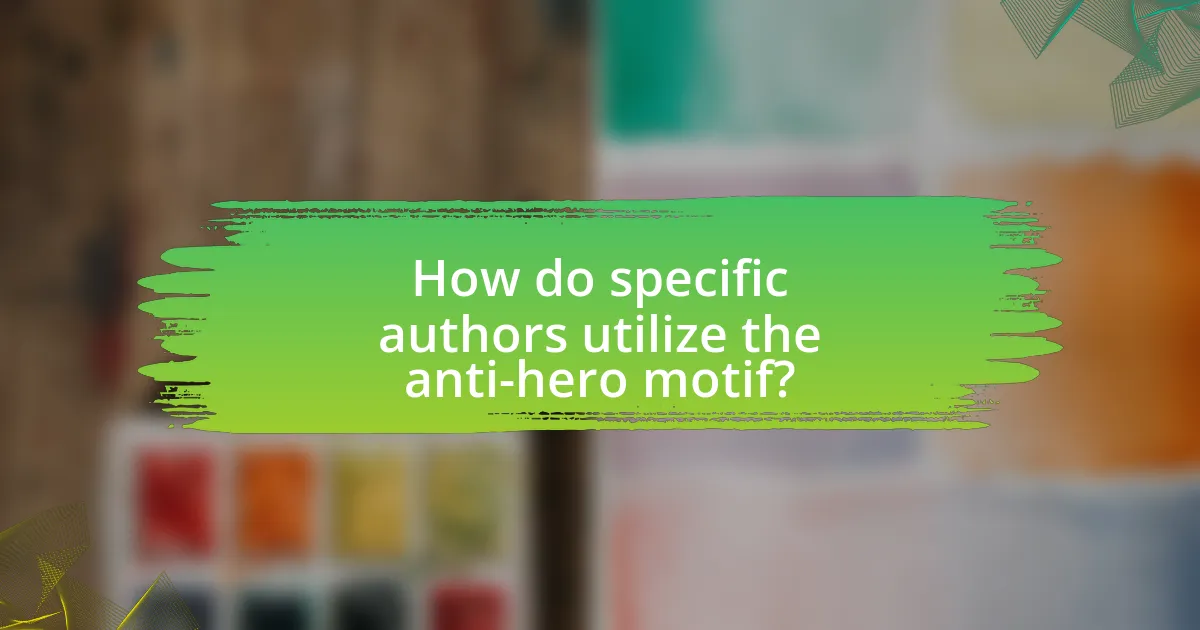
How do specific authors utilize the anti-hero motif?
Specific authors utilize the anti-hero motif by creating complex characters who embody moral ambiguity and challenge traditional notions of heroism. For instance, in “Breaking Bad,” Vince Gilligan presents Walter White as a high school chemistry teacher turned methamphetamine manufacturer, illustrating the transformation of a seemingly ordinary man into a morally compromised figure. Similarly, in “The Road” by Cormac McCarthy, the father character exhibits anti-hero traits through his desperate actions to protect his son in a post-apocalyptic world, raising questions about morality in survival. These authors effectively use the anti-hero motif to explore themes of identity, morality, and the human condition, reflecting societal complexities and individual struggles.
Which notable 21st century authors are recognized for their anti-hero characters?
Notable 21st century authors recognized for their anti-hero characters include Cormac McCarthy, whose novel “No Country for Old Men” features the morally ambiguous character Anton Chigurh, and Gillian Flynn, known for her psychological thriller “Gone Girl,” which presents the complex anti-heroine Amy Dunne. These authors effectively explore themes of morality and human nature through their flawed protagonists, contributing significantly to the anti-hero motif in contemporary literature.
What techniques do these authors employ to develop their anti-heroes?
Authors employ techniques such as complex character backstories, moral ambiguity, and flawed motivations to develop their anti-heroes. By providing detailed backstories, authors create relatable yet troubled characters, allowing readers to understand their motivations and conflicts. Moral ambiguity is often used to challenge traditional notions of good and evil, making the anti-hero’s choices more compelling and thought-provoking. Additionally, flawed motivations, such as personal vendettas or survival instincts, add depth and realism, illustrating the internal struggles that define these characters. These techniques collectively enhance the complexity and relatability of anti-heroes in 21st-century literature.
How do the anti-heroes in their works reflect contemporary societal issues?
Anti-heroes in 21st-century literature reflect contemporary societal issues by embodying moral ambiguity and challenging traditional notions of heroism. These characters often navigate complex social landscapes marked by inequality, corruption, and disillusionment, mirroring the struggles faced by individuals in modern society. For instance, in works like “Breaking Bad,” Walter White’s transformation from a high school teacher to a drug lord highlights issues of economic desperation and the failures of the healthcare system, illustrating how societal pressures can lead individuals to make unethical choices. Similarly, in “The Catcher in the Rye,” Holden Caulfield’s alienation and critique of societal norms resonate with themes of mental health and the search for identity in a rapidly changing world. These narratives serve as a reflection of the complexities of human behavior and the societal factors that influence it, making anti-heroes a powerful lens through which to examine contemporary issues.
What impact do anti-heroes have on plot development?
Anti-heroes significantly impact plot development by introducing moral ambiguity and complex character dynamics. Their flawed nature often drives conflict, challenging traditional notions of heroism and creating tension within the narrative. For instance, in 21st-century literature, characters like Walter White from “Breaking Bad” exemplify how anti-heroes can catalyze plot twists and character evolution, leading to unpredictable outcomes. This complexity engages readers, prompting them to question ethical boundaries and the nature of good versus evil, thereby enriching the overall narrative experience.
How do anti-heroes drive conflict within their stories?
Anti-heroes drive conflict within their stories by embodying moral ambiguity and challenging traditional notions of heroism. Their flawed characteristics often lead to internal struggles and external confrontations with other characters, creating tension and complexity in the narrative. For instance, in 21st-century literature, characters like Walter White from “Breaking Bad” illustrate how an anti-hero’s descent into criminality generates conflict not only with law enforcement but also within their personal relationships, highlighting the duality of their nature. This internal and external conflict propels the plot forward, engaging readers and prompting them to question the nature of good and evil.
What narrative techniques enhance the complexity of anti-hero arcs?
Narrative techniques that enhance the complexity of anti-hero arcs include unreliable narration, moral ambiguity, and character backstory development. Unreliable narration allows readers to question the protagonist’s motives and perceptions, creating a layered understanding of their actions. Moral ambiguity challenges traditional notions of right and wrong, forcing readers to grapple with the anti-hero’s flawed decisions and justifications. Additionally, in-depth character backstory development provides context for the anti-hero’s behavior, revealing the traumas or experiences that shape their choices. These techniques collectively deepen the reader’s engagement and understanding of the anti-hero’s multifaceted nature.
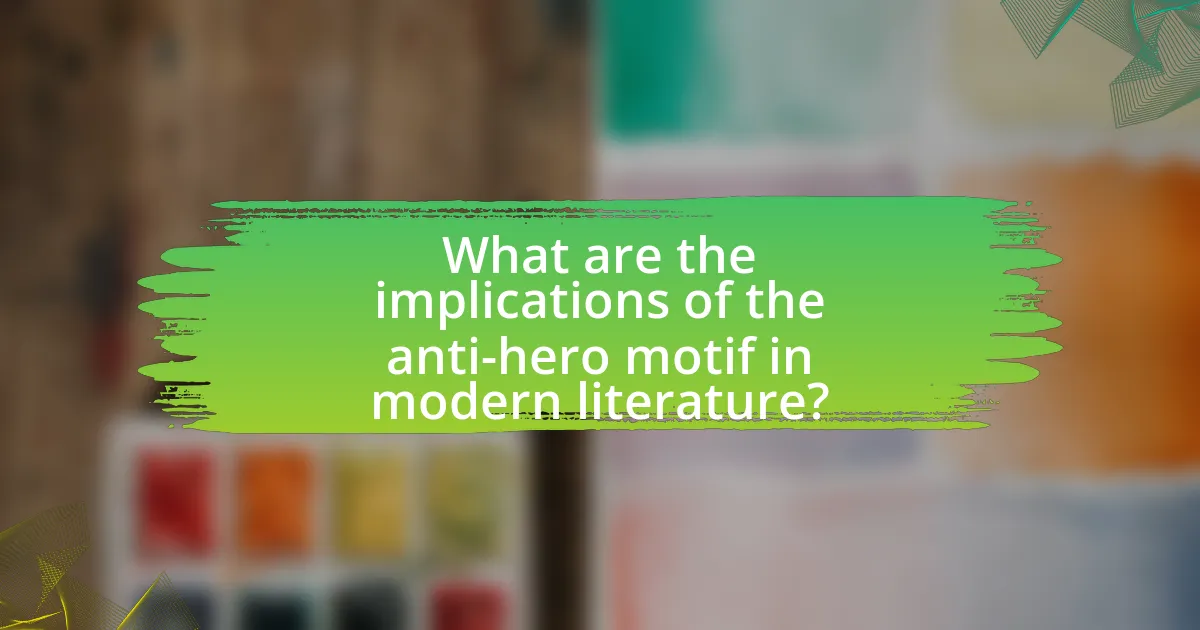
What are the implications of the anti-hero motif in modern literature?
The anti-hero motif in modern literature implies a shift in character complexity and moral ambiguity, reflecting contemporary societal values. This motif challenges traditional notions of heroism by presenting protagonists who possess flawed characteristics, often engaging in morally questionable actions. For instance, characters like Walter White in “Breaking Bad” and Tony Soprano in “The Sopranos” exemplify this complexity, as they navigate personal and ethical dilemmas that resonate with audiences. The prevalence of anti-heroes indicates a cultural fascination with the gray areas of morality, suggesting that readers are increasingly drawn to narratives that explore the human condition in a nuanced manner. This trend highlights a departure from clear-cut heroism, emphasizing the importance of character development and psychological depth in storytelling.
How does the anti-hero challenge traditional notions of morality?
The anti-hero challenges traditional notions of morality by embodying complex, flawed characteristics that defy conventional heroic ideals. Unlike traditional heroes who adhere to clear moral codes, anti-heroes often operate in morally ambiguous spaces, making decisions based on personal gain or survival rather than altruism. For example, characters like Walter White from “Breaking Bad” illustrate this challenge by transforming from a law-abiding citizen into a drug lord, prompting audiences to question the nature of good and evil. This shift in perspective encourages a reevaluation of moral standards, as anti-heroes often evoke empathy despite their unethical actions, highlighting the gray areas of human behavior and morality.
What discussions arise from the portrayal of anti-heroes in literature?
The portrayal of anti-heroes in literature generates discussions about morality, identity, and societal norms. These characters often challenge traditional notions of heroism, prompting readers to question the nature of good and evil. For instance, anti-heroes like Walter White in “Breaking Bad” illustrate the complexities of human motivation and the consequences of choices, leading to debates on whether their actions can be justified. Additionally, the rise of anti-heroes reflects contemporary societal issues, such as disillusionment with authority and the quest for authenticity, which resonate with modern audiences. This shift in character archetypes encourages critical analysis of narrative structures and the evolving landscape of moral ambiguity in storytelling.
How do anti-heroes influence reader perceptions of right and wrong?
Anti-heroes significantly influence reader perceptions of right and wrong by challenging traditional moral frameworks. These complex characters often embody traits that blur the lines between good and evil, prompting readers to reconsider their own ethical beliefs. For instance, in works like “Breaking Bad,” Walter White’s transformation from a high school teacher to a drug lord forces audiences to grapple with the consequences of his choices, illustrating how context can alter moral judgments. This narrative complexity encourages readers to engage in deeper moral reasoning, as they must evaluate the motivations and circumstances surrounding the anti-hero’s actions rather than adhering to a simplistic good-versus-evil dichotomy.
What lessons can be learned from analyzing anti-heroes in literature?
Analyzing anti-heroes in literature reveals lessons about moral ambiguity and the complexity of human nature. These characters often challenge traditional notions of heroism, illustrating that individuals can possess both admirable and flawed traits. For instance, in works like “Breaking Bad,” Walter White embodies the struggle between good and evil, prompting readers to reflect on the consequences of choices and the impact of societal pressures. This exploration encourages a deeper understanding of empathy, as readers may find themselves relating to the anti-hero’s motivations and struggles, ultimately questioning their own moral judgments.
How can understanding anti-heroes enhance literary analysis skills?
Understanding anti-heroes enhances literary analysis skills by providing deeper insights into character complexity and moral ambiguity. Anti-heroes often challenge traditional notions of heroism, prompting analysts to explore themes such as ethics, motivation, and societal norms. For instance, characters like Walter White from “Breaking Bad” illustrate how flawed protagonists can evoke empathy while simultaneously engaging in morally questionable actions. This complexity encourages readers to critically evaluate character motivations and the implications of their choices, thereby enriching their analytical capabilities. Furthermore, analyzing anti-heroes allows for discussions on narrative structure and the impact of character development on plot progression, reinforcing the importance of character-driven storytelling in contemporary literature.
What practical insights can writers gain from the anti-hero motif?
Writers can gain several practical insights from the anti-hero motif, primarily the ability to explore complex character development and moral ambiguity. By utilizing anti-heroes, writers can create characters that resonate with audiences through their flaws and relatable struggles, as seen in works like “Breaking Bad” with Walter White, who embodies the conflict between good and evil. This motif allows for deeper narrative exploration, as it challenges traditional notions of heroism and invites readers to engage with themes of redemption, identity, and societal critique. Furthermore, the anti-hero’s journey often reflects real-life dilemmas, making stories more compelling and relevant to contemporary issues.
